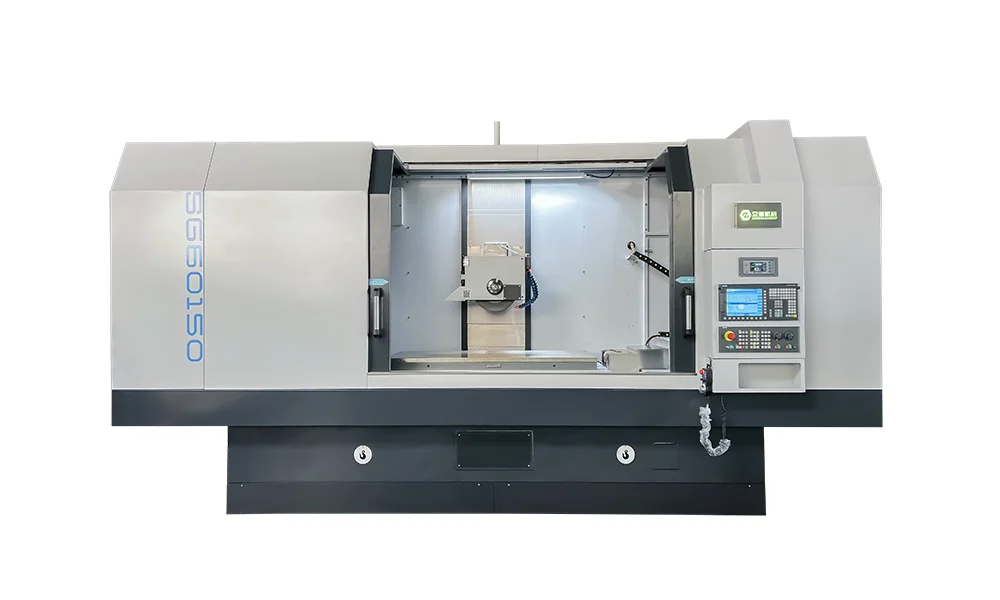- This topic is empty.
-
AuthorPosts
-
05/11/2025 at 16:36 #4888
In modern manufacturing, precision and efficiency are critical factors for achieving consistent product quality. One of the most advanced solutions in metalworking is the automatic 3 axis surface grinder, which provides unmatched accuracy, repeatability, and productivity. In this blog post, Nantong Zode, as one of the high performance CNC surface grinding machines manufacturers, will share the important role of automatic 3 axis surface grinders.
An automatic 3 axis surface grinder is a specialized machine tool designed for high-precision grinding of flat and contoured surfaces. Unlike conventional grinders, which often require manual operation, automatic surface grinders integrate computer-controlled systems to manage the movement along three axes: X, Y, and Z. This multi-axis control ensures that complex surfaces are machined with tight tolerances and consistent finishes.
Key Components of 3 Axis Surface Grinder
Understanding the main components of an automatic surface grinder helps explain its precision capabilities:
-
Grinding Wheel – Typically made of abrasive materials such as aluminum oxide or diamond, the wheel removes material with minimal heat generation.
-
Work Table – Moves along the X and Y axes, enabling precise positioning of the workpiece under the grinding wheel.
-
Spindle and Z-Axis Movement – The spindle holds the grinding wheel and moves vertically along the Z-axis for controlled material removal.
-
Control System – Modern machines utilize CNC (Computer Numerical Control) software to automate motion and optimize grinding cycles.
Applications of Automatic 3 Axis Surface Grinder
Automatic 3 axis surface grinders are widely used in industries where precision is paramount. Typical applications include:
-
Automotive Components: Grinding engine blocks, transmission parts, and camshafts with high dimensional accuracy.
-
Aerospace Manufacturing: Machining turbine blades, landing gear components, and other aerospace-critical parts.
-
Tool and Die Industry: Producing molds, dies, and precision tooling with consistent flatness and surface finish.
-
Electronics and Precision Engineering: Creating parts with micron-level tolerances for semiconductors or optical devices.
Advantages of Multi-Axis Automation
While traditional grinders rely on operator skill, the automatic 3 axis surface grinder integrates advanced automation, offering several operational benefits:
-
High Repeatability: CNC control ensures the same grinding program produces identical results across multiple parts.
-
Complex Surface Handling: Multi-axis movement enables grinding of intricate geometries that would be challenging manually.
-
Reduced Operator Dependency: Automation minimizes human error, allowing operators to focus on programming and monitoring.
-
Optimized Material Removal: Automated feed rates and wheel control improve efficiency while maintaining surface quality.
Technological Innovations in 3 Axis Grinding
Recent advancements have transformed automatic surface grinding into a high-tech operation:
-
Adaptive Grinding Software: Real-time monitoring of wheel wear and vibration allows the system to adjust feed rates automatically.
-
Hybrid Machine Integration: Some grinders combine milling and grinding functions, enabling multi-process machining in a single setup.
-
Coolant and Dust Control Systems: Advanced coolant nozzles and dust collection improve surface quality and maintain a cleaner workspace.
-
Smart Diagnostics: Sensors track spindle health, vibration, and temperature, reducing downtime and maintenance costs.

Selecting the Right 3 Axis Surface Grinder
Choosing the appropriate automatic 3 axis surface grinder depends on multiple factors:
-
Workpiece Size and Geometry: Ensure the machine’s travel along X, Y, and Z axes accommodates the largest parts.
-
Material Hardness: Grinding harder alloys may require diamond wheels or specialized abrasives.
-
Production Volume: High-volume manufacturing benefits from machines with rapid feed rates and automated loading systems.
-
Software Compatibility: Look for CNC systems compatible with your existing CAD/CAM software for streamlined programming.
Maintenance and Operational Best Practices
Maintaining the precision and longevity of an automatic surface grinder requires systematic care:
-
Regular Calibration: Verify axis alignment and spindle accuracy to maintain tight tolerances.
-
Wheel Dressing: Periodically reshape the grinding wheel to preserve cutting efficiency and surface finish quality.
-
Lubrication and Coolant Checks: Ensure smooth movement of axes and proper cooling during grinding operations.
-
Software Updates: Keep the CNC system updated to take advantage of performance enhancements and new features.
Future Trends in Surface Grinding Technology
The future of automatic 3 axis surface grinding is shaped by smart manufacturing and Industry 4.0 trends:
-
Integration with IoT Systems: Real-time monitoring and predictive maintenance reduce unplanned downtime.
-
AI-Powered Grinding Optimization: Artificial intelligence can optimize grinding parameters based on material type and desired finish.
-
Sustainable Grinding Practices: Improved coolant recycling and energy-efficient motors reduce environmental impact.
-
Collaborative Robots (Cobots): Automation of material loading and unloading further enhances throughput while maintaining safety.
Conclusion
The automatic 3 axis surface grinder has evolved from a precision tool to an intelligent manufacturing solution. By combining multi-axis control, CNC automation, and advanced monitoring, it delivers exceptional surface quality, repeatability, and operational efficiency. For industries demanding precision—from aerospace to automotive—these grinders are a strategic investment, aligning with modern manufacturing’s push for smarter, faster, and more reliable production processes.
http://www.zodemc.com
Nantong Zode -
-
AuthorPosts
- You must be logged in to reply to this topic.